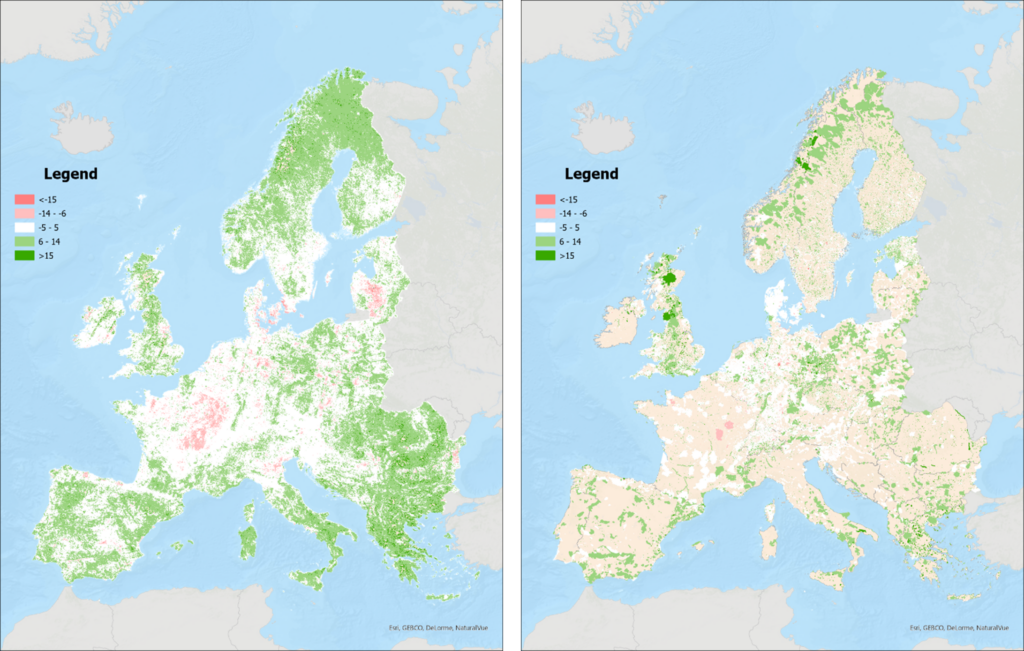
Europe’s Protected Area Policies Could Use a Little More Ambition
A recent study seeks to explore the effectiveness of Europe’s land protections and finds the quantity of land protected is not as important as policies that target areas with a meaningful trade-off between biodiversity gains and economic costs.
In December 2022, almost 200 countries signed the Kunming-Montreal Global Biodiversity Framework that pledges to protect 30 percent of the earth’s land and waters by 2030 and avert the potentially-catastrophic decline in a million species of animals and plants. In Europe, 26 percent of landmass already has protected status. The continent also has a wide range of policies to improve biodiversity, including a law that prevents imports of goods linked to deforestation and a nature restoration law. Most importantly, however, the EU’s flagship policy—Natura 2000—has become the largest coordinated network of protected areas in the world with over 100,000 individual sites.
This sounds like an important piece of good news amidst a looming biodiversity crisis, but it also raises a few questions:
- How effective have Europe’s land protection policies been?
- Has nature flourished as Europe protected more land?
- Why are certain areas protected but others are not?
In a recent study by researchers from the University of Pennsylvania and the Toulouse School of Economics1, we answer those questions with a high-resolution remote sensing satellite dataset. We link information on when each protected area was established and observe its vegetation greenness over time. With that, we can study how politicians choose which areas to protect, and if vegetation and forests expand and recover following protection.
Our data cover the years 1985-2020 for the whole of Europe, split into 300-by-300-meter plots of land. Using a metric for greenness called the normalized difference vegetation index (NDVI), we measure both the presence of vegetation and its health, with higher values on a 0-100 scale indicating denser and richer vegetation. We study a variety of natural landscapes, including grassland, agricultural regions, shrubland, and forests.
To measure the impact of Europe’s land protection policies, it is important to consider that the continent has greened substantially over the last 100 years. Forests have expanded by more than 30% since 1900, an area equal to the size of Portugal. The figure on the left shows changes in NDVI over the past 35 years and reveals that many parts of Europe have become greener. The figure on the right shows that protected areas have become greener, too. The big question then becomes: has land protection played a major role in this greening?

We compare land in protected areas with never-protected areas that have similar land, soil, and climatic characteristics. This gives us a sobering result: in none of the EU member states do we find evidence for a statistically sizeable contribution of protection to vegetation cover. We also do not find any evidence that protection becomes more impactful when nature has had some time to recover: even 30 years after protection, we still find a zero effect on vegetation cover.
In our study, we explored whether or not areas that got protected later saw a larger increase in vegetation cover than areas protected earlier. As most of the “easy” areas have been selected for protection, subsequent protection might have to occur in areas where there is a larger threat of economic development, and hence where protection would have bigger impacts. But no such pattern can be detected in the data—land that is protected later is not greening differently than land that is protected earlier.
Overall, this sends a clear message about the usefulness of Europe’s protection efforts. The quantity of land protected is not a helpful goal in and of itself: protection policy should target areas with a meaningful trade-off between biodiversity gains and economic costs. In reality, however, we find that land chosen for protection is likely to be in areas that have always been forested or where we see a lot of greening on both protected and non-protected land. It appears that EU policymakers have successfully identified land that has never been under much threat of development.
None of this is to say that the EU’s framework for protection is flawed. What it does suggest is that the current target lacks ambition. To really help nature, European countries should increase the 30 percent target or start protecting land that is under direct development pressure.
Arthur van Benthem
Associate Professor of Business Economics and Public PolicyArthur van Benthem is an expert in environmental and energy economics, exploring the economic efficiency of energy policy. He is a faculty fellow at the Kleinman Center and an associate professor of Business Economics and Public Policy at Wharton.
- Earle Grupp, T., P. Mishra, M. Reynaert and A.A. van Benthem. 2023. “An Evaluation of Protected Area Policies in the European Union.” Working Paper. [↩]

